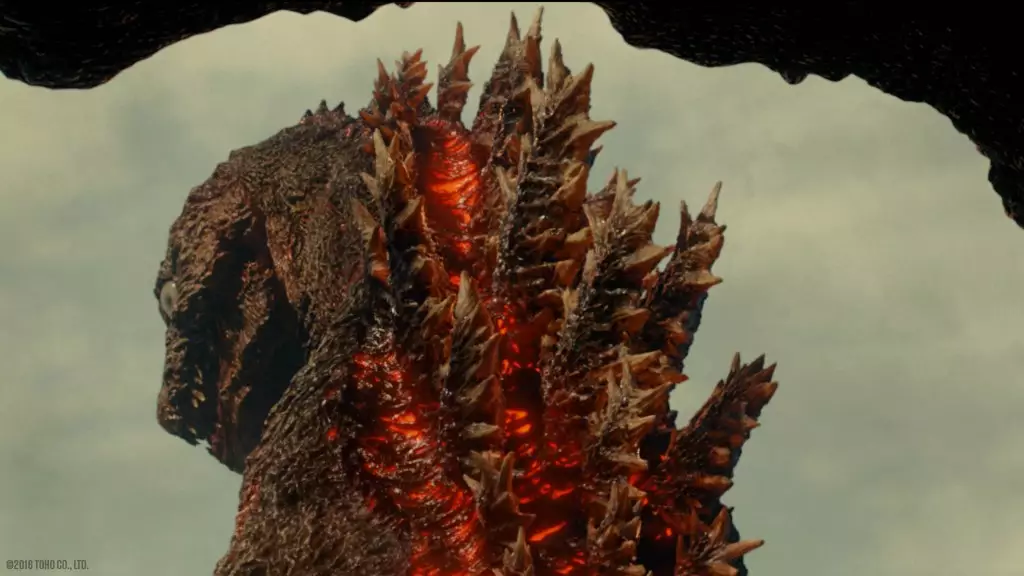The recent resurgence of Shin Godzilla in 4K exemplifies a broader trend in the film industry: harnessing cutting-edge technology to breathe new life into beloved franchises. This release not only captures the nostalgia of die-hard fans but also attracts new audiences who crave high-resolution visuals and immersive experiences. It demonstrates that film re-releases can serve as strategic platforms for cultural revitalization, reminding us that cinematic history remains alive and vibrant when paired with technological innovation.
The film’s impressive opening figures, with a weekend gross of $1.6 million across nearly 1,300 screens, highlight the audience’s appetite for both familiarity and quality presentation. Its cumulative total of $2.5 million in just a few days underscores how critical technological remasters are in reigniting interest. This move isn’t merely about aesthetic enhancement; it’s an effort to elevate storytelling, making older films more engaging and accessible in the modern viewing environment. As the industry continues to adapt to digital advancements, the emphasis on high-resolution formats like 4K reflects a strategic response to evolving consumer expectations.
The Power of Narrative and Political Satire
Shin Godzilla’s storyline deftly combines action with sharp political commentary, a combination that resonated profoundly in its original 2016 release and continues to captivate audiences. The film’s depiction of a government overwhelmed by a monstrous threat acts as an allegory for real-world crisis management, highlighting the fragility and resilience of political systems. This layer of satire adds depth to the spectacle, prompting viewers to consider larger societal issues amidst the entertainment.
The film’s portrayal of the Prime Minister’s desperate appeal to an anxious populace, juxtaposed with the arrival of a colossal creature chaos, critiques bureaucracy and ineffectual leadership. It reveals that giant monsters are not only physical threats but also symbolic of societal fears—climate change, pandemics, geopolitical tensions. Releasing it in the current climate reinforces its relevance, demonstrating how innovative narratives can provide a mirror to contemporary anxieties, ultimately enriching the viewing experience beyond mere spectacle.
Market Dynamics and Audience Preferences
The current box office landscape displays a fascinating blend of blockbuster franchises, independent films, and niche documentaries—each vying for audience attention. The successes of Indian films like Coolie and War 2 reflect a growing global appetite for diverse cinematic storytelling. Their sizable openings across hundreds of screens demonstrate how regional cinema is firmly establishing its presence in international markets, challenging the dominance of Hollywood and traditional Japanese blockbusters like Godzilla.
Meanwhile, smaller indie productions such as Kate Beecroft’s East Of Wall and Samuel Van Grinsven’s Went Up the Hill reveal an audience that is increasingly seeking stories that are intimate, authentic, and emotionally resonant. The impressive critical reception of East Of Wall, with a 92% rating on Rotten Tomatoes, underscores a demand for well-crafted personal narratives that explore complex human experiences. This divergence in market offerings suggests that consumers are no longer passive viewers but active participants who appreciate both spectacle and substance.
The limited release of films like The Glassworker and Checkpoint Zoo illustrates the importance of strategic placement. Their targeted openings generate buzz and engagement within niche communities before scaling broader distribution. It also emphasizes the significance of live Q&As, reviews, and audience word-of-mouth—elements that are critical in an era saturated with streaming options. The industry’s challenge is to balance high-profile blockbuster success with the cultivation of smaller, impactful stories that diversify the cinematic landscape.
Shifting Audience Engagement in a Digital Age
This current wave of theatrical releases and re-releases highlights a fundamental shift in how audiences consume film. Streaming platforms have expanded accessibility, but theatrical exhibitions remain a vital platform for immersive storytelling and cultural moments. The resurgence of classic titles and independent films proves that audiences still crave shared experiences—screenings that foster community and generate excitement.
The substantial streaming figures for Jeff Buckley’s music, notably his cover of “Hallelujah,” reflect a broader cultural phenomenon: audiences are rediscovering and redefining iconic figures through digital media. This trend amplifies the significance of storytelling that transcends the frame, blending music, personal histories, and cultural memory into a cohesive narrative tapestry. It invites us to consider how the digital age is reshaping not only content consumption but also the way stories are curated, shared, and celebrated.
As cinemas continue to navigate these transformations, producers and distributors must innovate in ways that resonate with contemporary viewers—integrating augmented reality, behind-the-scenes content, and interactive experiences to deepen engagement. The success of films like The Glassworker at dedicated venues affirms that when presentation matches content quality, audiences respond with enthusiasm. To thrive, filmmakers must craft stories that are both timely and timeless, leveraging technology and storytelling to forge meaningful connections in an increasingly digital world.
